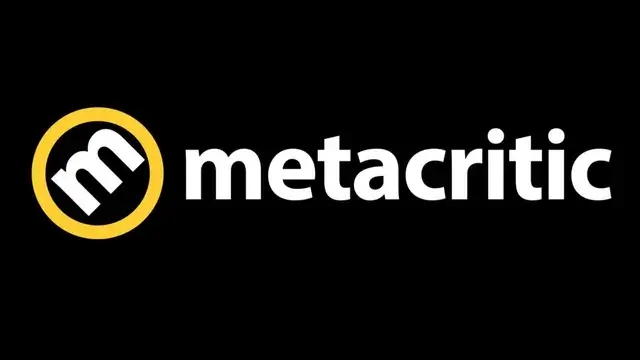The Ultimate Guide to Metacritic: Everything You Need to Know

Introduction to Metacritic
What Is Metacritic?
Metacritic is one of the most recognized review aggregation platforms on the internet. It compiles reviews from a wide range of respected critics and publications, creating a single number known as the Metascore. This number is intended to represent a weighted average of the critical reception for movies, TV shows, video games, and albums.
Launched in 1999, Metacritic quickly rose to prominence for offering a one-stop shop for users wanting to gauge the general consensus on a piece of media. Whether you’re trying to decide which movie to watch on a Friday night or which game to buy next, chances are you’ve ended up on Metacritic at least once. It’s become a trusted reference point for millions of users every month.
But it’s not just about the score—Metacritic offers detailed review snippets from critics, full links to original articles, and even side-by-side comparisons of critic and user scores. It’s all designed to give you a comprehensive overview of how something is being received. Think of it as the Rotten Tomatoes of everything—not just movies.
Its interface is simple, but the data behind it is vast. You can browse by category, check upcoming releases, and even view “Best Of” lists that help you discover hidden gems in entertainment. For anyone who wants to avoid spending time or money on subpar content, Metacritic serves as a reliable filtering tool.
The Mission Behind Metacritic
Metacritic’s mission is fairly straightforward: to make quality judgments easier for users by summarizing professional opinions into one digestible score. It aims to be an objective, data-driven tool that helps users make better media consumption choices.
The platform is built on the belief that expert reviews matter. Rather than simply allowing anyone to post a score (although it allows user reviews too), Metacritic puts its faith in curated, expert opinions. It believes that people who review media for a living are more likely to offer balanced, informed, and context-aware evaluations than your average consumer.
That’s why the platform invests heavily in selecting the right sources. Metacritic doesn’t just grab any blog review it finds online. It chooses critics from trusted publications that meet specific editorial standards. These reviews are then analyzed, translated into numerical scores (if they aren’t already), and weighted based on the critic’s perceived influence and reliability.
Ultimately, Metacritic wants to help users avoid disappointment. In a world overflowing with options, that’s a pretty valuable service. Whether you agree with every score or not, it’s hard to deny the convenience of having a single number summarize dozens of professional opinions.
How Metacritic Works
Understanding the Metascore
The heart of Metacritic is the Metascore—that colorful little number you see on every review page. It’s more than just an average; it’s a weighted aggregate score out of 100 that reflects the overall critical reception of a product.
Here’s how it works: Metacritic gathers reviews from a curated list of publications and critics. Each of those reviews is translated into a standardized score out of 100. Then, Metacritic applies a proprietary weighting system. Some critics have more influence on the score than others, depending on their reputation, accuracy, and perceived value.
Once all this is done, the platform averages these weighted scores to produce a final Metascore. The color associated with the score gives users an at-a-glance idea of the consensus:
- Green (75–100): Generally favorable reviews
- Yellow (50–74): Mixed or average reviews
- Red (0–49): Generally unfavorable reviews
This color-coding system simplifies decision-making. You don’t need to read every individual review to know if something is well-received or not. That said, if you want the nuance, the reviews are all available just below the Metascore.
It’s a brilliant idea in theory—but it’s not without its complexities. More on that in the controversy section later.
User Reviews vs Critic Reviews
Metacritic offers two parallel scoring systems: the Metascore from critics and the User Score from the general public. This distinction is crucial because it highlights the often wide gap between professional opinion and consumer sentiment.
Critic reviews are vetted, edited, and based on a full understanding of context, history, and industry standards. User reviews, on the other hand, are crowd-sourced. They come from anyone with an account and can vary wildly in quality and intent.
Each product page displays both scores prominently, which is where things get interesting. Sometimes, critics love something that users hate—and vice versa. For example, a film might be lauded for its artistic ambition but slammed by viewers for being too slow or pretentious. Or a video game could be celebrated by fans but criticized for technical issues that the average player doesn’t notice or care about.
The ability to compare both perspectives gives users a more well-rounded view. But it also opens the door to review bombing—something we’ll explore in detail later.
Categories Covered by Metacritic
One of Metacritic’s strengths is its versatility. Unlike sites like Rotten Tomatoes (which is mostly focused on film and TV), Metacritic spans multiple categories, including:
- Movies – From indie films to blockbusters, Metacritic tracks critical reception on everything showing in theaters or streaming.
- Television – Includes seasons and episodes from broadcast, cable, and streaming services like Netflix, Hulu, and Amazon Prime.
- Video Games – One of the site’s most popular categories. Covers console, PC, and mobile games.
- Music – Albums from mainstream artists to underground releases are reviewed by prominent music critics.
- Books (limited) – While not a primary focus, some book reviews are also aggregated.
This multi-category approach makes Metacritic a powerful cross-media tool. Want to know the best-reviewed PS5 games of the year? Or the most talked-about new Netflix series? Metacritic has you covered—all in one place.

Why Metacritic Matters in the Entertainment Industry
Impact on Video Game Sales
In the gaming world, Metacritic is more than just a review site—it’s a make-or-break force. Game developers, publishers, and even investors watch Metacritic scores like hawks. Why? Because a high Metascore can dramatically boost a game’s visibility and sales, while a low score can spell disaster, no matter how much marketing muscle is behind it.
Publishers often use Metascores as a benchmark for success. Some even tie developer bonuses or contract renewals directly to a game’s Metascore. For example, a studio might receive additional funding or incentives if their game hits a score of 85 or higher. This adds immense pressure on developers, especially those working under big-name publishers.
Moreover, gamers tend to trust Metacritic when making purchasing decisions. If a new game drops with a score below 60, many potential buyers will hesitate—even if user scores suggest otherwise. In this sense, the platform has become a form of quality control, albeit a controversial one.
It’s also worth noting that Metacritic influences which games get shelf space or digital promotion. Retailers and digital stores often prioritize high-rated titles, pushing them to the front page and boosting exposure. That means a better Metascore can lead to better placement, which leads to better sales—a feedback loop that benefits top-scoring games disproportionately.
On the flip side, some indie developers criticize the system for favoring established franchises and big-budget games. They argue that Metacritic’s reliance on major critics can sometimes ignore niche titles that resonate more deeply with gamers than with reviewers. But love it or hate it, Metacritic has carved out a central role in the gaming ecosystem.
Influence in the Film Industry
In Hollywood, perception is everything—and Metacritic plays a key role in shaping that perception. While box office numbers tell one story, Metacritic tells another. It gives a snapshot of critical reception that often determines whether a film is considered a “success” from an artistic and reputational standpoint.
For independent films and smaller studios, a high Metascore can be a game-changer. It can lead to more festival invitations, attract attention from distributors, and increase the chances of awards season buzz. For example, a well-reviewed indie film might not rake in huge box office dollars but could still become a critical darling thanks to its Metascore.
Streaming platforms also rely on Metacritic data. Netflix, Amazon Prime Video, and others use critical scores to help decide what content to promote or acquire. High-scoring shows and movies are more likely to be featured on homepages or pushed to new users via recommendation algorithms.
Even actors and directors keep an eye on their Metacritic history. It’s not uncommon for résumés and portfolios to reference Metascores of past projects, especially in meetings with investors or studios. A strong critical track record adds credibility and can help land future roles or directorial gigs.
Of course, critics aren’t always aligned with the audience. Many films have flopped with critics but gone on to become cult classics. Still, in the eyes of industry insiders, a good Metascore remains a valuable stamp of approval.
Role in Music Criticism
Although Metacritic’s influence in the music industry isn’t quite as massive as it is in gaming or film, it still holds considerable weight—especially for artists who care about critical validation. Music reviews are notoriously subjective, but Metacritic helps listeners cut through the noise by summarizing the opinions of top critics.
When a new album drops, music fans often flock to Metacritic to see how it’s being received. A high score can signal that an album is worth checking out, especially if it’s from a lesser-known artist. Conversely, a low score might steer listeners away or spark heated debate among fan communities.
Record labels also pay attention. An artist with a consistently strong Metacritic history is more likely to receive promotional support and investment. They may also get more opportunities to collaborate with high-profile producers or be invited to major festivals.
For music journalists, Metacritic is a resource that can amplify their voices. Reviews featured on the site gain broader visibility, which helps build the reputation of the publications and writers involved. It’s a symbiotic relationship: critics contribute to Metacritic, and Metacritic brings new readers to critics.
There’s also a cultural angle. When an album debuts with a 90+ Metascore, it immediately enters the conversation as a potential “classic.” It generates social media buzz, media coverage, and sometimes even influences year-end best-of lists. So while Metacritic might not dictate music trends, it certainly contributes to the cultural dialogue around them.
Behind the Scenes of the Metascore
How Critics Are Chosen
Ever wonder who gets to influence those all-important Metascores? It’s not just any blogger or YouTuber. Metacritic has a strict selection process for choosing which critics and publications to include. The idea is to ensure that the voices shaping the scores are professional, consistent, and credible.
To be featured, a publication typically needs to meet certain editorial standards. This includes regular content output, a structured review process, and a recognizable reputation within its field. Individual critics also need to demonstrate a strong history of insightful, well-argued analysis. We’re talking about outlets like The Guardian, IGN, Rolling Stone, and Variety, among many others.
Once approved, a critic’s reviews are converted into a standardized 0–100 score. If a review includes a numerical score, it’s used directly. If it uses stars, letter grades, or other rating systems, Metacritic has internal rules for converting those into a percentage equivalent. Even if a review doesn’t have a score at all, the Metacritic team will interpret the tone and assign a representative number.
The idea here is to maintain a consistent scoring system across very different kinds of reviews. Of course, this opens the door to subjectivity and debate—especially when converting non-numerical reviews—but it’s the price of creating a unified metric.
How Scores Are Weighted
Not all critics carry the same weight on Metacritic. Some reviews have a bigger impact on the final Metascore than others, and this weighting system is one of Metacritic’s most closely guarded secrets.
While the exact algorithm isn’t public, we do know that influence is determined by a critic’s reputation, accuracy, and history. Major outlets like The New York Times or Entertainment Weekly tend to have more sway than smaller, lesser-known sites. That makes sense in terms of visibility and reach—but it also means the system isn’t entirely democratic.
This weighting adds a layer of complexity to the score. A product could have mostly average reviews, but a glowing review from a high-impact critic might boost the Metascore significantly. The reverse is also true—a harsh critique from a major outlet can drag the score down, even if most other reviews are positive.
It’s a polarizing system. Supporters argue that it reflects real-world influence—after all, some critics do shape public opinion more than others. Detractors say it gives too much power to the mainstream and marginalizes diverse voices. Either way, it’s a big part of what makes Metacritic tick.
Algorithm Transparency Concerns
As helpful as Metacritic can be, it’s not without its mysteries. One of the biggest criticisms aimed at the platform is its lack of transparency. The site doesn’t disclose exactly how scores are weighted, how algorithms work, or how it decides which critics to feature. This has led to frustration among users, developers, and media professionals alike.
Some believe that the lack of clarity can lead to unfair outcomes. For instance, if a few high-weight reviews are overly negative, they can tank a score—regardless of how many average or positive reviews exist. Developers and publishers have called for more openness, especially when livelihoods are tied to hitting specific score thresholds.
Even regular users have raised eyebrows. Why does one outlet’s review seem to matter more than another’s? Why are certain well-respected critics missing from the site altogether? Without more detailed answers, it’s difficult to fully trust the system.
That said, Metacritic has made efforts to address concerns. It has expanded its critic base, added user review filtering features, and even introduced “Metacritic Must-See” and “Must-Play” badges to highlight exceptional content. Still, the call for greater algorithmic transparency remains a hot topic.

The Controversies Surrounding Metacritic
Review Bombing and User Score Manipulation
One of the biggest challenges Metacritic faces today is review bombing—the act of mass-posting negative user reviews to intentionally lower a product’s score. This often happens for reasons that have little to do with the actual quality of the game, movie, or album. Sometimes it’s political, sometimes it’s about unmet expectations, and sometimes it’s just trolling.
A notorious example of review bombing occurred with games like The Last of Us Part II or Diablo Immortal. While critics praised these titles for their storytelling and gameplay, some users took to Metacritic to vent their frustration over character decisions, monetization strategies, or ideological differences. Within hours of release, the user scores plummeted due to thousands of 0/10 ratings.
This creates a serious credibility issue. While the Metascore remains untouched by user reviews, casual visitors may still be swayed by those bright red user scores. It can make a great piece of content appear terrible—and that’s harmful not just for creators, but also for users who rely on these scores to make choices.
Metacritic has attempted to combat review bombing by delaying the opening of user reviews for certain releases. For instance, in some cases, users must wait 36 to 72 hours post-launch before leaving a review, giving them time to actually experience the content. While this helps a bit, it’s far from a complete solution.
The problem is compounded by the anonymity of online platforms. Unlike critic reviews, which are traceable and accountable, user reviews can be created en masse using dummy accounts. Until Metacritic finds a better way to verify user intent and authenticity, review bombing will remain a thorn in its side.
The Effect on Developers and Studios
For creators, a Metacritic score isn’t just a vanity metric—it can directly affect careers, bonuses, and future opportunities. In the gaming industry especially, a few points can be the difference between a financial bonus or a pink slip. This immense pressure has made many developers wary of Metacritic’s influence.
It’s been reported that some studios include Metascore targets in their contracts. If a game doesn’t hit, say, a 90 Metascore, the developers might not receive their performance bonuses—even if the game sells well and has a strong fan base. This has led to a growing sentiment that Metacritic’s influence is disproportionate and sometimes damaging.
Worse yet, a low Metascore can harm a developer’s reputation. Even if the game is fun, technically sound, and well-liked by users, a poor critical reception can lead to fewer job offers or lost investment opportunities. Studios might be forced to pivot, abandon sequels, or undergo restructuring—all because of a number on a website.
On the flip side, there’s also the risk of “Metacritic crunch”—where studios push their teams to polish games for reviewers rather than real players. This can involve focusing on flashy features that please critics or avoiding experimental mechanics that might lead to divided opinions. The result? Safer, less innovative games built to “score high” instead of breaking new ground.
For filmmakers and musicians, the effects are similar, though slightly less extreme. A low score might not cancel a tour or sequel, but it can still impact funding, streaming promotion, or future collaboration opportunities. Whether we like it or not, the numbers matter—and that’s a double-edged sword for creators.
Debate Around Score Aggregation
The very concept of aggregating reviews into a single number is controversial. Critics argue that it oversimplifies complex opinions and reduces nuanced critiques into a blunt, binary decision: “good” or “bad.” Art isn’t math, after all, and distilling it into a score risks missing the point entirely.
Imagine a film that’s experimental, challenging, or divisive. Half the critics might love it for pushing boundaries, while the other half might find it inaccessible or flawed. Metacritic would average those scores, potentially giving the film a middling Metascore. But does that really reflect the value of the movie? Or does it just punish bold creativity?
There’s also concern that readers will focus only on the number, skipping the actual reviews. This undermines the purpose of criticism, which is to foster discussion, provide context, and help audiences understand why something works or doesn’t. A score tells you if it’s good or bad—but not why.
Furthermore, not all review systems are created equal. Some publications use 5-star scales, others use letter grades, and many rely purely on qualitative commentary. Translating all of that into a 0–100 scale involves judgment calls that aren’t always accurate or fair.
Despite these issues, score aggregation also has its defenders. Many users appreciate the simplicity and convenience. They don’t have time to read 20 different reviews before buying a game or watching a movie. For them, a Metascore is a helpful shortcut—imperfect, but informative.
At the end of the day, it’s a tool. Like any tool, it can be misused, but it can also be incredibly useful when used wisely and with context.
Conclusion
Metacritic has become one of the most powerful platforms in entertainment media. From its humble beginnings as a review aggregator to its current role as a tastemaker for millions, it’s shaped how we consume, critique, and create content across games, movies, TV, and music.
Its core feature—the Metascore—offers a streamlined way to understand critical consensus. But it’s far from perfect. Behind that little number lies a complex system of weightings, algorithms, editorial decisions, and human judgment. And with its influence growing by the year, Metacritic has sparked plenty of debates about fairness, transparency, and the role of criticism itself.
Whether you’re a creator trying to please the critics, a fan navigating review bombs, or a casual viewer looking for something good to watch, understanding Metacritic is more important than ever. It’s not just about the score—it’s about what that score represents, and how we choose to engage with it.
So next time you see a Metascore, take a moment to dig deeper. Read a few reviews. Compare with the user score. And remember: numbers are helpful, but stories—and opinions—are richer.


